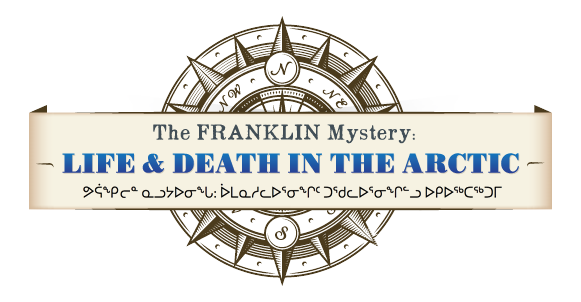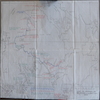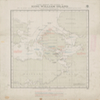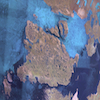Twentieth and Twenty-First Century Searches for Franklin
In the twentieth century, the search for evidence of Franklin's last expedition continued, sometimes opportunistically by visitors who were travelling in the region for other reasons, and on other occasions systematically by professionals in expeditions funded to collect evidence. The visitors included Knud Rasmussen, who interviewed several members of the Netsilingmiut during his visit to the region in the early 1920s, confirming the continuation of Inuit oral traditions of Franklin many decades after the disappearance of his party. Over the following decades other visitors to the region uncovered additional information or artefacts and these discoveries of the first 75 years following Franklin`s disappearance were consolidated in a detailed Admiralty chart authored by Rupert T. Gould in 1927 and reproduced here.
In 1984 archaeologist Owen Beattie investigated the emaciated human remains of John Torrington, one of three Franklin Expedition members buried in shallow graves at Beechey Island where the ships wintered in 1845-46. Beattie was able to do a forensic analysis which revealed several issues that contributed to the death of Torrington and possibly many others of the crew. Beattie found elevated levels of lead in Torrington’s bones and lead is a poison that can lead to mental illness and death which led to a hypothesis that lead poisoning from some source aboard ship may have killed or disabled the crew.
In the 1990s and early 2000s, ship Captain David Woodman led several expeditions searching for Franklin’s ships. Using sensitive magnetometers carried by two aircraft, his team identified more than 60 magnetic targets of which they determined five were consistent with the expected features of Erebus and Terror. Woodman also participated with Parks Canada senior archaeologist Robert Grenier and archaeologist Margaret Bertulli in an expedition oriented to using sonar technology to further examine the priority magnetic areas he identified in 1992. Woodman and others returned in 1994, 1995, 2001, 2002, and 2004. They did not find the ships but identified probable Franklin artefacts on a small islet northeast of O'Reilly Island.
Inuit also played an important role in search expeditions of the twentieth century. Louie Kamookak, a senior hunter of Gjoa Haven, Nunavut, participated in a series of expeditions in search of evidence of Franklin in the late twentieth and early twenty-first centuries, and is considered to have been more involved in the search than any other individual. As well, in the 1990s and 2000s the writer Dorothy Eber assembled an important collection of Inuit oral histories from various communities with knowledge of Franklin's party. Relating stories that were passed down from one generation to the next, these individuals displayed a remarkable knowledge and some new details originating with Inuit witnesses of the Franklin era.
The accuracy and importance of Inuit testimony was tangibly demonstrated by the 2014 discovery of the wreck of HMS Erebus, Franklin’s flagship by Parks Canada and its partners. Beginning in the 1860s Inuit and their descendants told of an abandoned ship they witnessed in the vicinity of O’Reilly Island in the Queen Maud Gulf. Their testimony helped focus the search for one of the missing ships, culminating in the discovery.
Among other new stories, Eber's Inuit informants provided fascinating accounts of the possible wintering by one of Franklin's ships and members of his expedition at Imnguyaaluk (the Royal Geographical Society islands) off the west coast of King William Island. If so, was this the ship that was eventually found farther south near O’Reilly Island? See the excerpts from transcripts of the original testimonies of these Inuit informants in your collection of documents.





